Biodiversity in the Plant Collections
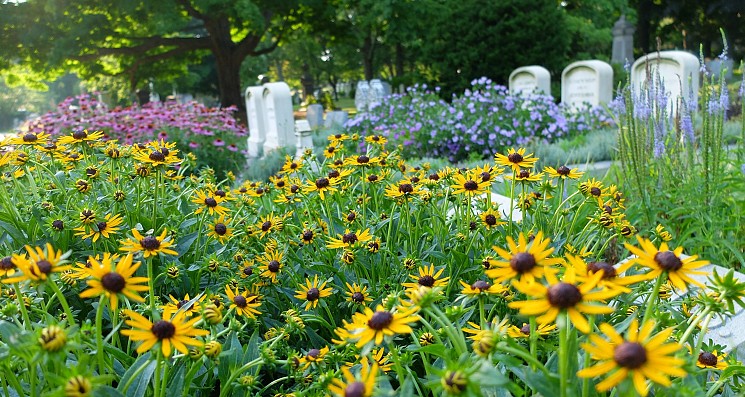
Efforts to increase plant biodiversity throughout Mount Auburn’s 175 acres began in the 1990s to address Master Plan (1993) recommendations. Initially, our diversification efforts responded to the evident lack of ground-layer and understory vegetation. Over the past 20 years, however, these efforts have become more focused through our strategic planning. Now, diversifying the Cemetery’s plant collections is an essential strategy to preserve our landscape’s health and increase its resiliency in the face of climate change.
Current Composition
According to our most recent Plant Collections Analysis, the statistical data shows a robust botanical collection that has been steadily increasing in numbers and diversity. An overview of the collections is below.
Composition Trends
The plant collections reflect the dynamic nature of Mount Auburn’s landscape. Every year we suffer plant losses due primarily to environmental stresses (e.g., drought and severe storms), and we add new plantings to the grounds. This net gain/loss of plants measures our ability to respond to changing conditions and build resilience through continuous diversification. The number of tree removals and new tree plantings remains relatively static, not only for the most recent five-year period but over the past 20 years. However, we plant significantly more shrubs and groundcovers in a given year than we remove.
In 2009, our total number of plants and massed plantings was 16,772, and the number of different taxa was 1,754. Over the subsequent 10-year period, the total number of taxa increased by 33% to 2,335. We plan to continue this trend toward diversification in the next few years with several landscape enhancement projects, including the Indian Ridge Path Restoration and a proposed shrubland-meadow along Chestnut Avenue. With both projects, we will introduce new taxa that meet our biodiversity goals. However, it might be unrealistic to expect another 33% increase in new taxa over the next 10-year period. The more diversified the collections become, the harder it becomes to continue their diversification. Therefore, it might be more prudent to monitor these new additions and then add more of what is most successful.
Horticultural Initiatives
The following initiatives have been driving our diversification efforts for the past several years and will continue to do so for the foreseeable future.
▸ Conifer Collection Diversification
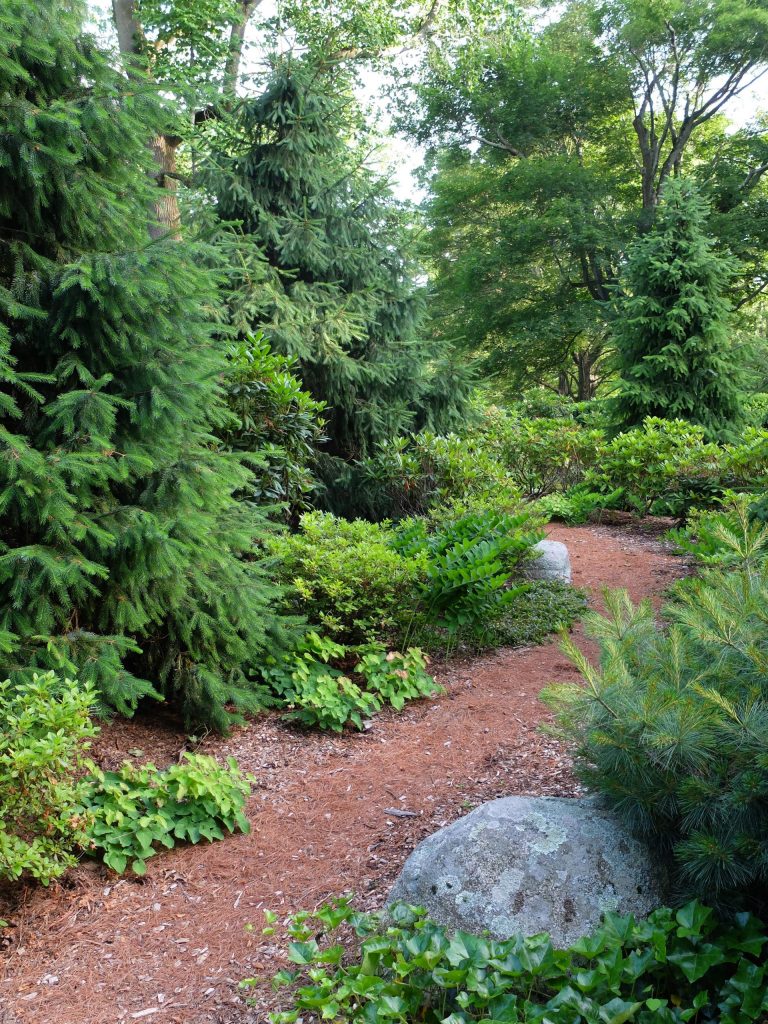
Since the early 1990s, we have worked strategically to reduce our hemlock collection which then represented a significant percentage of the Cemetery’s coniferous plants. Hemlock removals started as a response to the Hemlock Woolly Adelgid, an outbreak exacerbated by climate change. Today’s collection of 125 hemlock trees is one-third of what it was three decades ago, and the introduction of additional conifer species has diversified the collections. To add new conifer taxa to the collection, we expanded our in-house plant production program. But the process is slow because we have to propagate most of these plants from seed or cuttings. There are currently 250 seedlings in production, though we anticipate using only a portion of these once they reach maturity.
▸ Underground Tomb, Curb, and Fence Lot Plantings
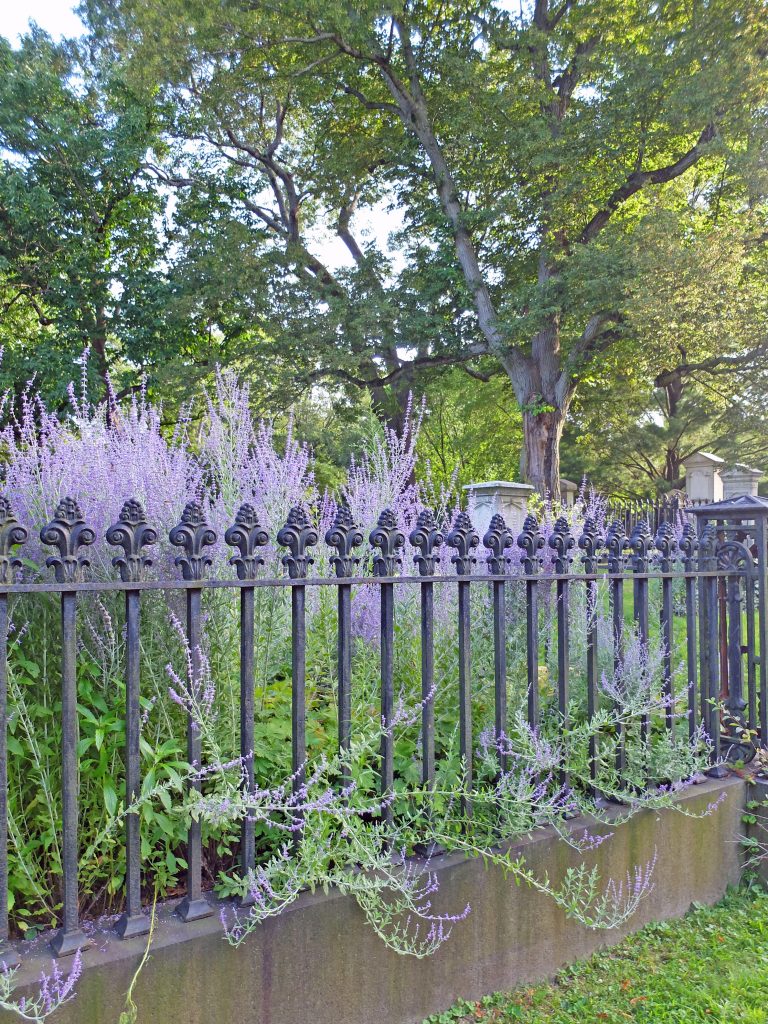
There are 640 lots on the grounds where granite curbing, iron fencing, or underground tombs present challenges for the safety of structures and staff performing routine turf maintenance. Our efforts to replace the turf in these lots with more sustainable and low-maintenance plantings started in 1993. Currently, we have completed 244 of these conversions (38%), and in recent years have averaged five new conversions per year.
▸ USDA Hardiness Zone 6 Plant Introductions
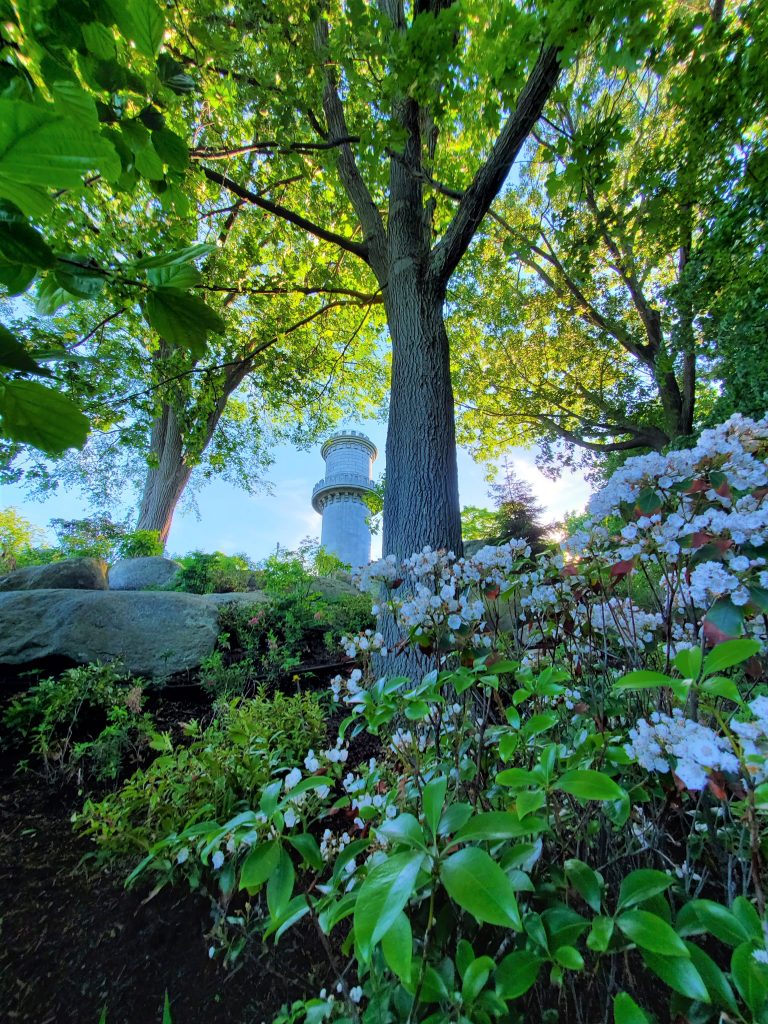
This is a long-term initiative, which anticipates further warming and growing conditions different from most of what Mount Auburn’s landscape has seen in the 190 years since its founding. After testing a fair amount of Zone 6 taxa, we will focus on adding the more proven ones into our landscape.
▸ Late Spring and Summer Flowering Plant Introductions
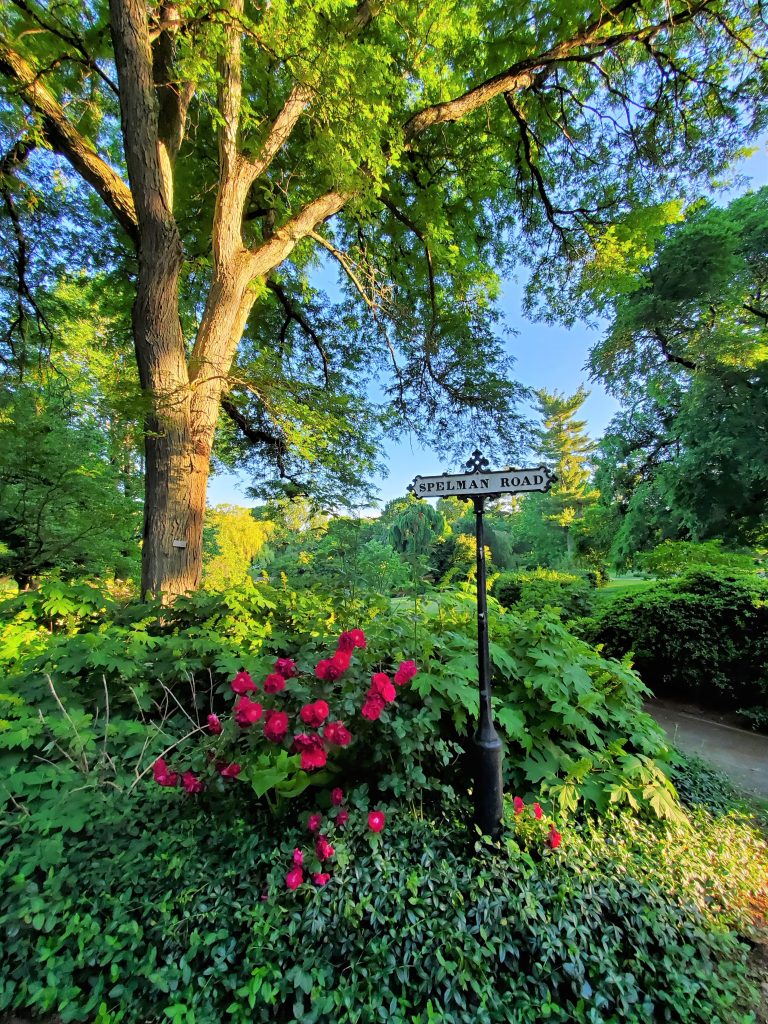
This initiative is primarily a response to the earlier and earlier flowering times we are seeing in our plants each spring, a phenomenon documented by our citizen scientist phenology study. This earlier bloom creates insect (food) shortages for birds during the annual spring migration. In the past two years, 50% of new plantings represent later-flowering species, and this initiative should continue for the foreseeable future.
▸ Historic Landscape Character Zone Enhancements
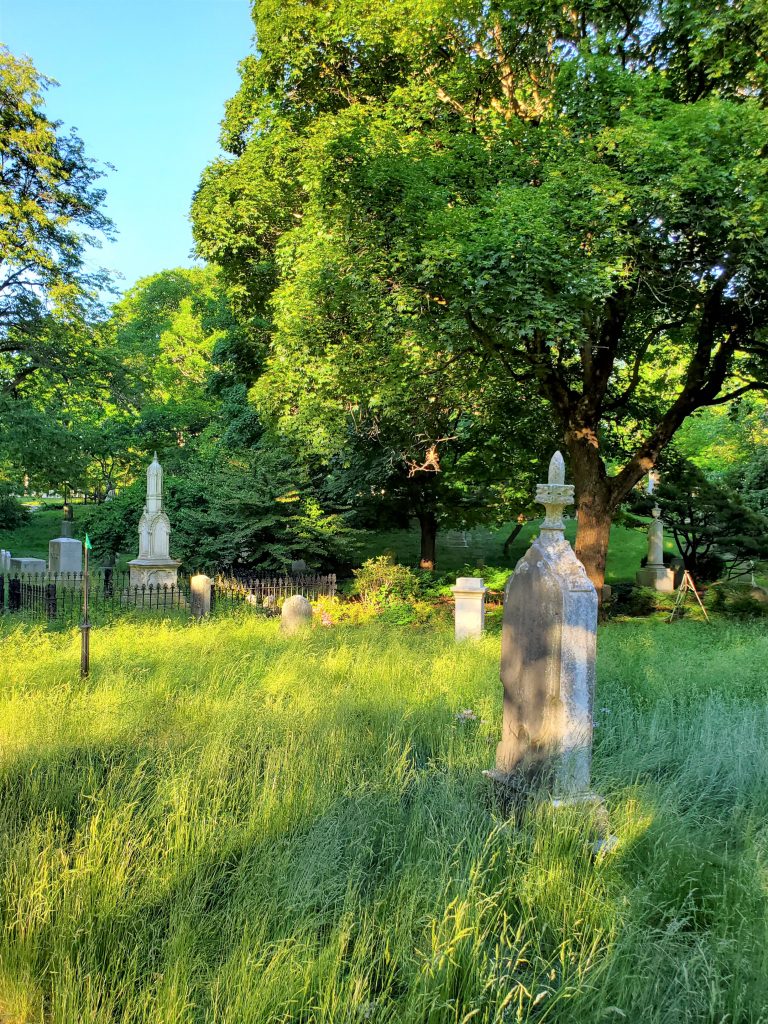
In place since 1993, this is by far the broadest and most complex initiative. Our desire to preserve the historic landscape initially drove much of the work supporting this initiative, but it turns out that historically appropriate practices are also more sustainable. For example, to introduce a more naturalistic appearance in the Cemetery’s historic core, we replaced traditional turf with lower-maintenance (minimally mowed) turf and groundcovers. In other parts of the Cemetery, we have transitioned high-maintenance shrubs to lower-maintenance alternatives. Towards this goal, we have replaced nearly 90% of the hedges in “the Meadow” area (near the Greenhouse) with lower maintenance plantings. In addition, we’ve used the renovations at Harvard Hill, the Appleton lot, the North Dell Meadows, the Beech-Central historic zone, the apiary meadow, and the slopes along Mountain Ave to introduce turf alternatives. Looking ahead, the final phase of our Indian Ridge Restoration project will see turf replaced with a sedge-wildflower meadow, and a proposed project along Chestnut Avenue will convert nearly 4 acres of turf to a shrubland-meadow.
More:
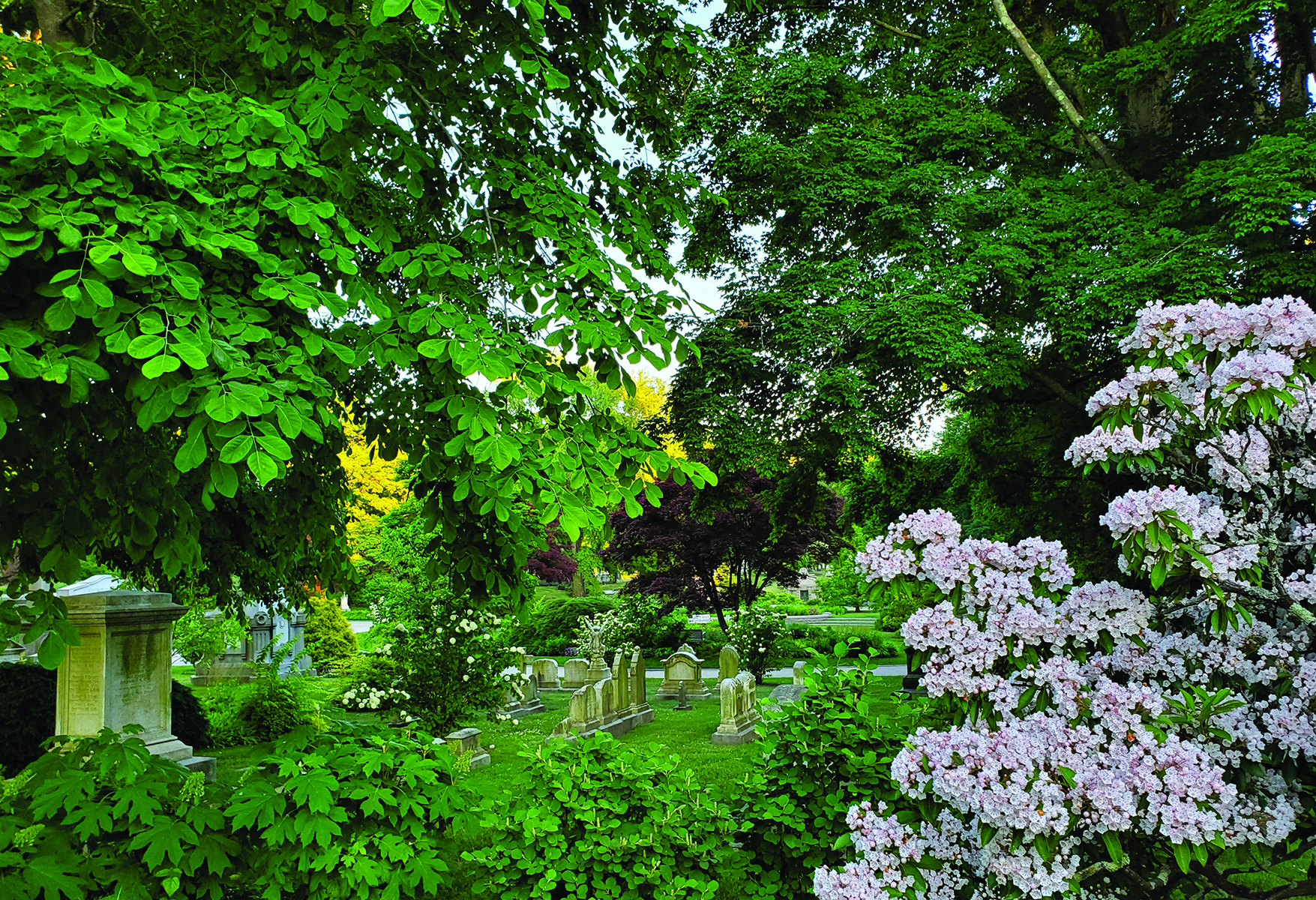
Environmental Stewardship
at Mount Auburn
Leave a Reply